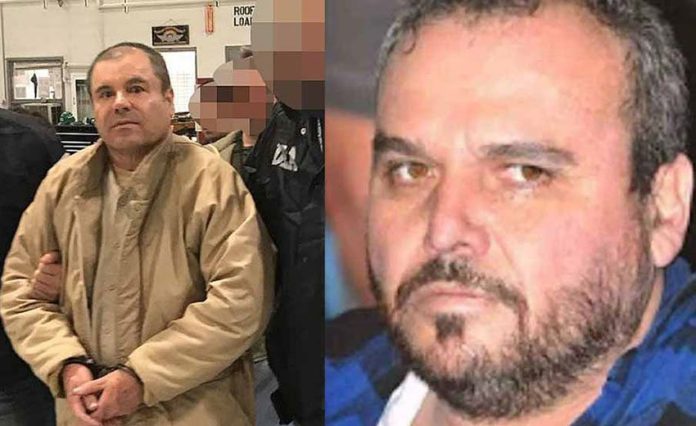Jurors at the New York trial of Joaquín “El Chapo” Guzmán heard cartel tales involving bribes, bullets and bloodshed during the second day of court testimony from a key prosecution witness.
Former Sinaloa Cartel operations chief Jesús Zambada told the jury Thursday that the notorious drug lord once ordered him to pay a US $100,000 bribe to a military general in Guerrero.
The general “is a friend of mine,” he recalled Guzmán telling him in 2004. “Give him a hug and notify him that I’ll be working around the state.”
A day after describing El Chapo as “one of the most powerful drug traffickers in Mexico” and spilling secrets on the inner workings of the lucrative trafficking operation he allegedly headed, the former cartel member told the court that the Sinaloa Cartel paid regular bribes – in dollars – to high-ranking police officers and officials at all three levels of government.
As “plaza leader” in Mexico City between 2001 and 2008, Zambada, who was extradited to the United States in 2012, claimed that he forked out around US $300,000 a month in illicit payoffs to federal and local police, prosecutors, airport officials and even Interpol agents.
One frequent recipient, he said, was the director of the federal Attorney General’s office. Another was the chief homicide investigator of the Mexico City police.
In exchange, they provided protection and information that allowed the cartel’s activities to run smoothly and turned a blind eye to crimes, including homicides committed by cartel members, Zambada explained.
Through bribes, the ex-cartel member claimed on Wednesday, “I controlled the airport in Mexico City . . . controlled the authority.”
The bribes paid to police were particularly useful, the witness said, after Guzmán escaped from prison for the first time in 2001 by hiding inside a laundry cart.
After arranging a helicopter to ferry him to a “semi-deserted location” in central Mexico, Zambada said that he and his brother – current Sinaloa Cartel leader Ismael “El Mayo” Zambada – picked up Guzmán and drove him to Mexico City.
As they reached the outskirts of the capital, the ex-cartel member recounted, Guzmán became anxious when he saw a police car and motorcycle pull in front of their vehicle, unaware that he had arranged for a police escort.
Zambada told the jury that he quickly reassured Chapo that there was no reason for concern.
“I said, don’t worry. These are our people, they’re here to protect us.”
Zambada also told jurors about bloody turf wars that broke out between rival groups of cartel sicarios, or professional killers.
He recounted details of a bloodbath at a Puerto Vallarta nightclub in 1992 when, according to Zambada, El Chapo attempted unsuccessfully to have Tijuana Cartel trafficker Ramón Arellano Félix killed.
Arellano survived but some of his sicarios and bystanders did not.
Zambada also spoke of the slaying of a Roman Catholic cardinal in Guadalajara in 1993 and the murder of a rival trafficker, who was shot in the neck.
The witness admitted to taking part in several Sinaloa Cartel murder plots.
“There was always a lot of deaths,” he said, although he denied ever having killed someone himself.
Zambada also recounted one episode when he was ambushed in a Mexico City store and very nearly killed.
Two attackers shot at him and one bullet sliced a deep groove in the side of his head as it whizzed past him.
“I’m alive,” he told the jury, “because the bullet didn’t penetrate my skull.”
Guzmán’s trial on 17 criminal charges including drug trafficking, conspiracy, firearms offenses and money laundering began this week amid tight security in the Brooklyn federal court.
On the first day of proceedings, a lawyer for the accused attempted to portray El Chapo as no more than a “scapegoat.”
The real Sinaloa Cartel leader is Ismael Zambada, Jeffrey Lichtman told the jury, claiming that El Mayo paid millions of dollars in bribes to President Peña Nieto and ex-president Felipe Calderón to avoid capture.
Both presidents vigorously denied the claim.
The trial, which is expected to last between two and four months, resumes Monday after a three-day recess.
Source: El Financiero (sp), Associated Press (en)
